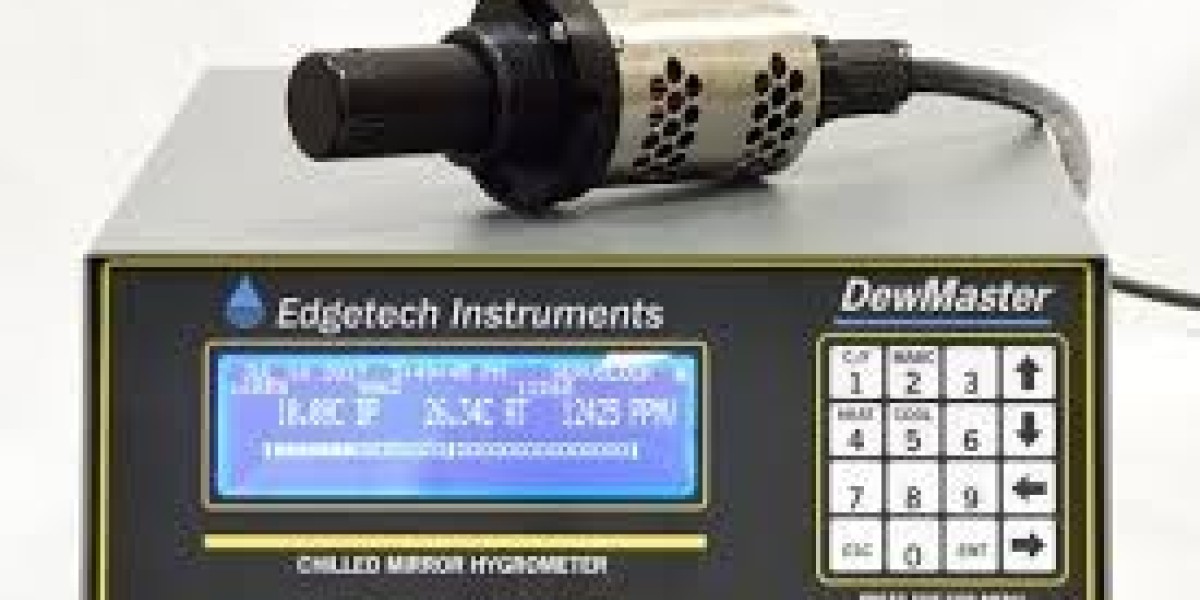In industries where precision and reliability are critical, accurate humidity measurement is not just a convenience—it’s a necessity. From pharmaceuticals and aerospace to cleanrooms and calibration laboratories, knowing the exact moisture content in air or gas is essential for maintaining product quality, safety, and compliance. Among various types of hygrometers, the Dew Point Measurement stands out as one of the most accurate and stable instruments for dew point and humidity measurement.
This article explores the working principles, benefits, applications, and comparisons of Dew Point Measurement. If you need uncompromised accuracy and long-term stability in measuring humidity, this technology may be your best choice.
What is a Chilled Mirror Hygrometer?
A chilled mirror hygrometer is a high-precision instrument used to determine the dew point temperature of a gas by directly observing the condensation of moisture on a mirror surface. It uses a temperature-controlled mirror, a photodetector, and an optical system to detect the formation of dew (or frost) and maintain the mirror at the exact temperature where this condensation occurs.
Unlike other types of hygrometers, such as capacitive or resistive sensors, Dew Point Measurement do not rely on indirect measurement or calibration drift. Instead, they provide a primary measurement of dew point, meaning the data is based on fundamental physical changes in the gas—making the readings highly accurate and reliable.
How Does a Chilled Mirror Hygrometer Work?
The chilled mirror hygrometer operates on a simple yet elegant principle: dew point measurement through optical detection of condensation. Here’s how the process works:
Gas Flow: A sample of gas flows through the measurement chamber and across a polished metal or glass mirror.
Mirror Cooling: A thermoelectric cooler (Peltier device) chills the mirror surface at a controlled rate.
Condensation Detection: As the mirror cools, a thin layer of moisture (dew or frost) begins to form on the surface once the mirror temperature reaches the dew point of the gas. This is detected by an optical system, typically consisting of an LED and photodetector.
Temperature Stabilization: Once condensation is detected, the control system adjusts the cooling to maintain the mirror at this exact temperature.
Reading Output: A built-in temperature sensor, usually a platinum resistance thermometer (Pt100), measures the mirror temperature. This value is displayed as the dew point—which can be used to calculate relative humidity, absolute humidity, or other psychrometric parameters.
Why Choose a Chilled Mirror Hygrometer?
Unmatched Accuracy
The primary advantage of Dew Point Measurement is their exceptional accuracy, typically ±0.2 °C dew point or better. This makes them ideal for critical environments where even slight deviations in humidity can affect outcomes—such as pharmaceutical manufacturing, semiconductor cleanrooms, or meteorological studies.
Long-Term Stability
Unlike capacitive or resistive humidity sensors that can degrade over time, the chilled mirror method is highly stable. Because it relies on direct physical phenomena rather than calibrated electronics, there is minimal drift, even after years of use.
Wide Measurement Range
Dew Point Measurement can measure extremely low dew points—down to -80°C or even -100°C—which is essential for dry gas applications, compressed air monitoring, or high-purity gas environments.
Traceability and Calibration Confidence
These instruments offer traceable, primary measurements that can serve as calibration standards for other sensors. This makes them ideal for calibration labs, national metrology institutes, and quality assurance departments.
Resistant to Contamination
Modern designs incorporate automatic mirror cleaning, temperature regulation, and flow control, reducing susceptibility to dust, oil, or chemical interference that may affect other sensor types.
Applications of Chilled Mirror Hygrometers
Thanks to their precision and reliability, Dew Point Measurement are widely used across numerous high-accuracy applications, including:
Pharmaceutical and Biotechnology
Humidity control in drug production and storage is crucial to ensure product stability and regulatory compliance. Dew Point Measurement offer reliable monitoring during formulation, packaging, and quality control.
Calibration Laboratories
Due to their traceable measurement and accuracy, these hygrometers are used as reference standards in calibration laboratories to validate other humidity sensors or instruments.
Aerospace and Defense
Aircraft cabins, military hardware, and space missions all require stringent environmental control. Dew Point Measurement ensure high-precision monitoring in critical systems.
Industrial Drying and Compressed Air
Drying processes, especially in plastics, metals, and coatings, rely on precise dew point monitoring. Likewise, in compressed air systems, moisture can lead to corrosion or machinery failure if not properly managed.
Semiconductor and Cleanroom Environments
Manufacturing electronics demands a controlled atmosphere free of moisture, which can affect product yield and performance. Chilled mirror devices provide essential humidity data in cleanroom settings.
Considerations When Choosing a Chilled Mirror Hygrometer
Before investing in a Dew Point Measurement, consider the following factors:
Measurement Range
Ensure the instrument supports your required dew point or humidity range. Some models specialize in ultra-low dew points, while others are designed for ambient monitoring.
Automation and Cleaning
Modern units may include automatic mirror cleaning systems, flow control, and sensor diagnostics. These features improve reliability in industrial or dirty environments.
Portability vs. Stationary Use
Some Dew Point Measurement are designed for portable field use, while others are bench-top or rack-mounted systems used in labs.
Data Logging and Connectivity
Check if the device supports USB, Ethernet, Modbus, or analog outputs to integrate with SCADA, DCS, or other data acquisition systems.
Maintenance Requirements
While generally robust, these devices do need regular cleaning and inspection, especially in high-contamination environments. Models with protective filters and self-diagnostics can reduce downtime.
Conclusion
In environments where even a slight variation in humidity can cause costly failures or regulatory non-compliance, chilled mirror hygrometers offer a level of accuracy and stability unmatched by other technologies. Their ability to provide direct, primary, and traceable dew point measurements makes them the gold standard in humidity instrumentation.






